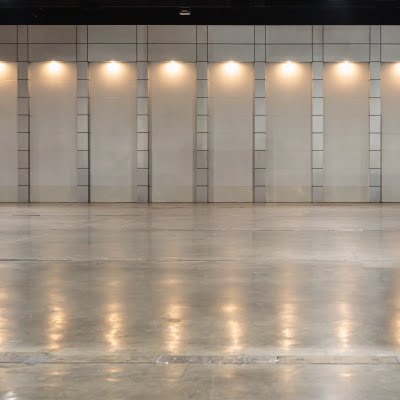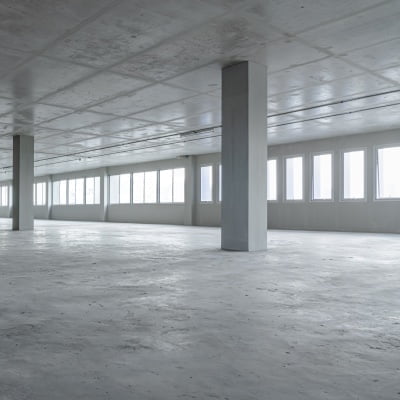To answer this question we must first ask why we have joints in concrete floors at all? Why not just pour the concrete over the steel mesh in one huge expanse?
Well the answer is, of course, cracking. The reality is that a single large piece of concrete is subject to a range of forces.
- Firstly, the drying of the concrete can cause cracks.
- Secondly, temperature variation will cause cracking.
- Also, cracking can be caused by movement in the ground under the concrete.
- Finally, the loads placed on the concrete floor by people, structures and heavy machinery will cause cracking.
The traditional approach to stopping cracks appearing in a concrete floor is to lay the floor in concrete slabs. These slabs are usually rectangular about 6m wide. The space between the concrete slabs are known as joints. These joints are basically planned cracks.

The problem is that the joints, left as they are, can start to crumble and create dust. The joints can collect debris and detritus making them unhygienic. Most importantly joints look pretty ugly.
Can we create a floor without joints? The answer is yes.
Two ways to make jointless floors
You have two solutions to the jointed floor problem:
If you have a pre-existing floor with joints you can create a seamless surface by filling the joints with epoxy resin.
If you are planning a new floor you can create very large slabs in excess of 30m by laying the floor using steel fibre, known as Steel Fibre Reinforced Concrete.
Seamless Resin Floor
In this approach the joints between the concrete slabs are filled with resin making the floor appear as one contiguous surface.
- Firstly, the joints are cleaned of debris and dust.
- Then, the joints are filled with a flexible epoxy resin colour matched to that of the surrounding concrete.
- Finally the joints are trimmed to leave a pleasing seamless finish.
This is a cost effective approach. However, in harsh environments where the floor is under heavy use the joints may need replacing every ten or so years.
Steel Fibre Reinforced Concrete
It is the BEST BASE you can have to build a jointless floor. Steel fibre flooring allows you to create slabs of more than 30m.
The limits of the current technology in Steel Fiber Reinforced Concrete (SFRC) for indoor use is about 60m.
The technique involves mixing high tensile steel fibres (60mm x 1mm) into the concrete mix.
This mix is then poured in the same way as a traditional concrete the floor. The fibres inhibit the formation of cracks in the concrete.
One draw back of SFRC is the likelihood of some fibres sticking out through the surface of the concrete.
One solution for concrete floors is the addition of a “dry shake” treatment during curing.
The dry shake is a granular mix of cement, ground aggregate, pigment and surface hardener which is spread across the surface of the new concrete during curing.
The concrete is then power trowelled to produce a smooth surface.
There are a number of significant benefits that arise from the use of SFRC over normal rebar reinforced concrete in concrete flooring.

- With SFRC there is a significantly reduced risk of cracking.
- The floor can be laid without expansion joints and, therefore, is more easily maintained and cleaned.
- The floor can up up to 50% thinner than conventional flooring meaning that SFRC is significantly cheaper.
Finishing the floor with the Becosan Treatment
Whichever approach has been applied you will want a top class jointless floor finish. We use the BECOSAN® Treatment to make the best of your concrete floor.
The BECOSAN® SYSTEM uses diamond pads to polish the floor to a high gloss finish so that it feels like glass to the touch.
However, it is still concrete and wear and tear will damage the surface and will produce dust if left untreated.
To counteract this we apply the BECOSAN® Concrete Densifier which binds with the lime in the concrete to make it resistant to abrasion and harder wearing.
Finally we apply the BECOSAN® Concrete Sealant which makes the floor resistant to liquid spillages.
An industrial flooring treated with the BECOSAN® will last for very many years and will give a surface comparable to any marble floor and at a fraction of the cost.
